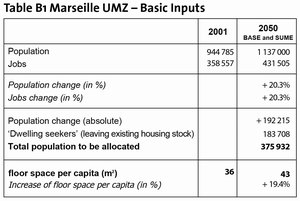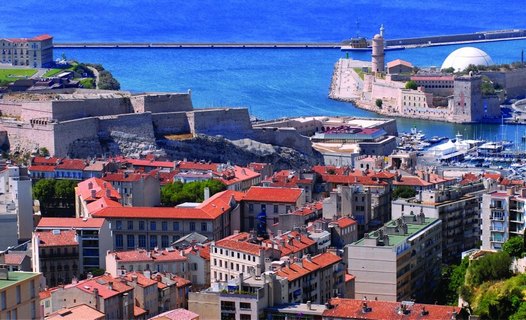As the oldest and second most populous city in France, Marseille has experienced generations of transformation. Spreading outward from the old port, the city's dense structure gives way to a more spread out, suburban form, the prevalent type of development during the latter half of the 20th century. This was restricted by the region's landscape however; which, with the Mediterranean Sea and the rugged Garlaban and Etoile mountain ranges, continues to be central in shaping regional development.
After a period of decline, Marseille is expected to grow from its present 940 000 residents to 1 135 000 by 2050. Coupled with this, an increase in living space, from the current 36m2 to 43m2 per person is expected to generate an additional 180 000 people looking for homes by 2050. In total, this means that there will be approximately 375 000 people seeking accommodation, and a related number of jobs, in Marseille between now and 2050. While this growth will undoubtedly place some strain on the region's existing urban form and resource consumption, the impact can be managed to some extent through the planning policies that are adopted throughout the region.
The expansion of the public transit system and the inner city renewal project, Euro Méditerranée, slated to house more than 38 000 people and provide 35 000 jobs, indicate that more resource-aware planning is taking place. Sprawl continues however. Despite efforts to renew Marseille's dense structure, adherence to the current planning paradigm will still require a 40km2 expansion of the existing urban fabric, with 135 000 residents in these newly developed areas by 2050. A more ambitious, resource-aware, plan could eliminate the need for expansion however. In this case, denser development within areas just beyond the urban core and along public transport corridors could ensure that all of the region's growth takes place within the existing built environment. While there are many factors at play, paramount to Marseille's development are the questions of how willing the Marseillais are to maintain, and beyond the city centre, increase, density levels or further embrace market trends towards significantly more living space.
High density, due in part to natural constraints including the Mediterranean Sea, has contributed to the resource efficiency of Marseille's urban form. In the coming years, the region will have to deal with pressures associated with renewed population growth.


High density, due in part to natural constraints including the Mediterranean Sea, has contributed to the resource efficiency of Marseille's urban form. In the coming years, the region will have to deal with pressures associated with renewed population growth.